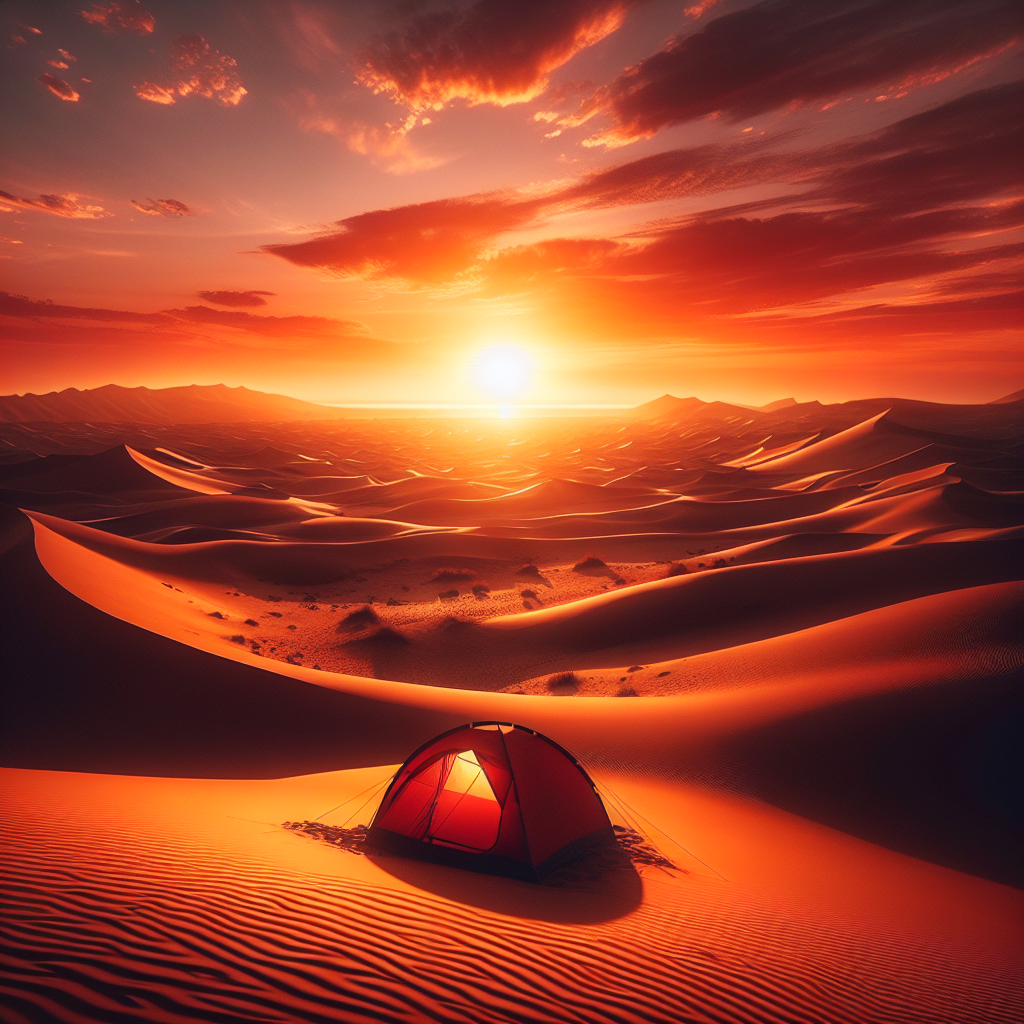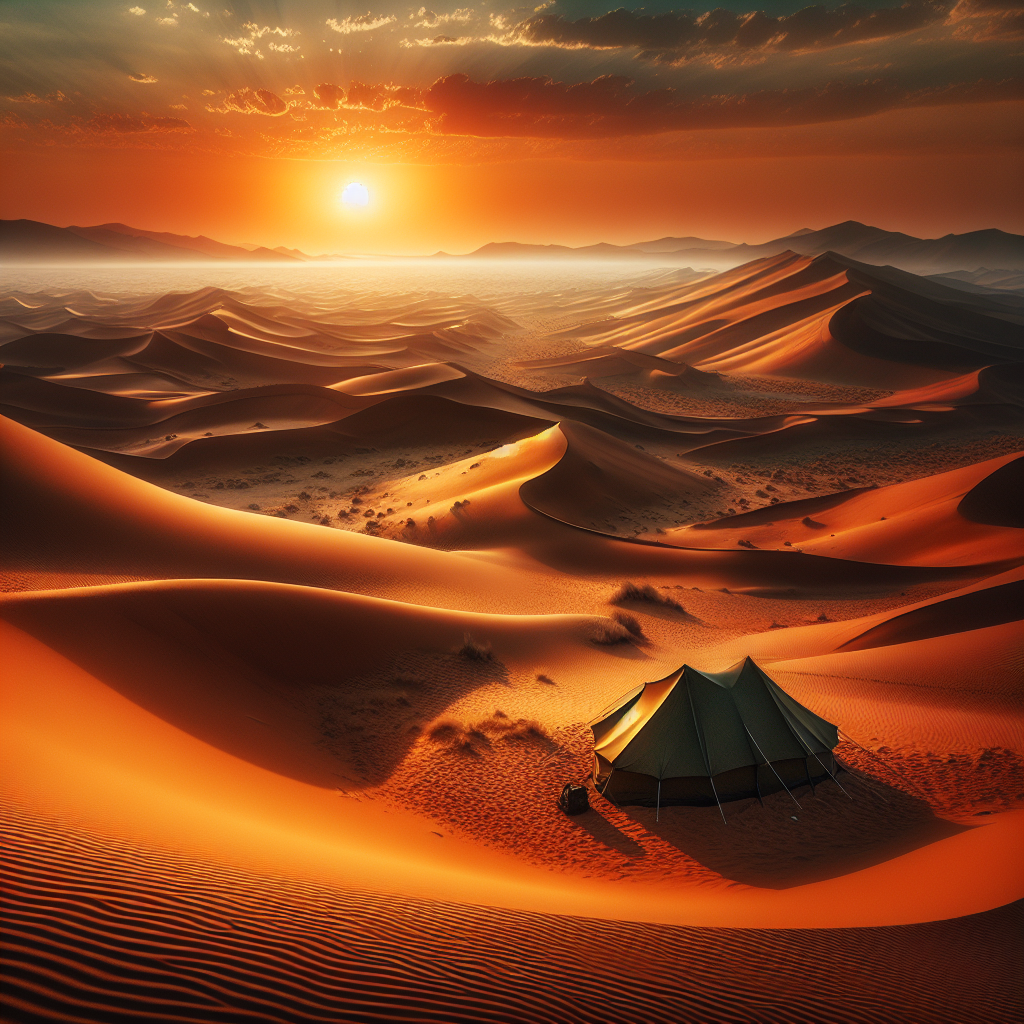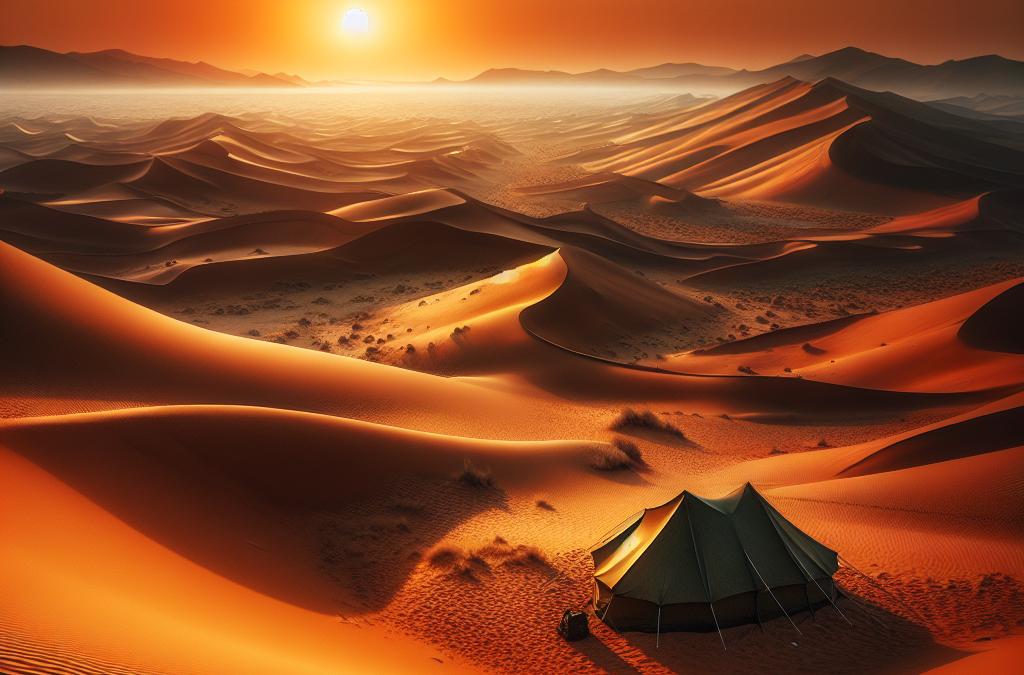Embarking on a desert camping trip? In “Desert Camping: Survival Tips In Arid Climates,” you’ll find invaluable advice assembled just for you! You’ll encounter nuggets of wisdom on how to adapt and thrive on your desert camping trip, helping you tackle the challenges of an arid climate. From keeping yourself hydrated to understanding temperature fluctuations, the wisdom provided in this insightful piece equips you for an unforgettable and safe desert adventure. Enjoy your journey into the arid wilderness, knowing you’re well-prepared and ready to face any situation that arises head-on.

Understanding the Desert Environment
Desert environments are unique and present distinct challenges to those who choose to explore them. Knowing and understanding these unique aspects is the first step towards ensuring a successful and safe adventure.
Recognizing the unique features of a desert
Deserts are characterized by their arid conditions, low humidity, extreme temperatures that can vary dramatically from day to night, and sparse vegetation. The landscape is vast, expansive and often consists of sand, rocks, and sparse, hardy shrubs. These environments are often isolated, remote, and carry a stark contrast of beautiful scenery and an eerie quietness.
Dangers and risks in desert environments
The desert is not to be underestimated. The vast landscape can be disorienting, leading to risk of getting lost. The harsh weather conditions pose their own dangers, including extreme heat during the day, chilling temperatures at night, and sudden, unpredictable sandstorms. The scarcity of water sources and shelter can also pose considerable risks to the unprepared.
Common desert climates and weather conditions
In the desert, weather conditions can be extreme and change rapidly. During the day, temperatures often soar, sometimes exceeding 100°F. At night, however, it can be surprisingly cold, even below freezing in some deserts. Sandstorms are also a common phenomenon, which can reduce visibility to almost zero and make navigation extremely difficult.
Preparation Before Setting out for a Desert Camping
Before embarking on your desert camping adventure, there are several considerations and preparations that should be taken into account to ensure a safe and enjoyable experience.
Knowledge and skills required
Survival skills are critical in a desert environment. You need to be well versed in navigation, first aid, finding and purifying water, building shelter, and understanding desert wildlife. Having knowledge of cloud formations, wind directions and star navigation can also prove invaluable in the desert.
Physical conditioning for desert camping
Being physically fit is vital in the desert. The dry heat and strenuous nature of desert hiking can take a toll on your body. You should ensure you are in good physical condition before your trip and be aware of the signs of dehydration and heat exhaustion.
Mapping your route and informed about the area
Planning your route before you set off and being knowledgeable about the area you’re visiting is crucial. You should familiarize yourself with the landscape, weather patterns, and potential water sources and shelter. Making use of topographical maps and compasses can also greatly aid in navigation.
Essential Gear for Desert Camping
Having the right gear can make a big difference in your desert camping experience. From choosing the right tent and sleeping bag to packing the necessary tools and supplies, quality and suitability should be your top considerations.
Importance of quality camping gear
When you’re out in the desert, your gear is your lifeline. Things to tick off your list would include a well-insulated tent, a snug sleeping bag, reliable cooking equipment, and a robust backpack to hold all your supplies.
Special camping gear for desert environments
Desert-specific gear can also come in handy. For instance, gaiters can be useful for keeping the sand out of your shoes. A sturdy, wide-brimmed hat is almost indispensable for blocking out the intense sun rays. And don’t forget a pair of good quality sunglasses to protect your eyes from sand and glaring light.
How to choose the appropriate gear and supplies
Your choice of gear and its quantity should be guided by the specifics of your trip – its duration, the expected weather conditions and the terrain of your chosen desert. Always cross-check your list of essentials, and make sure your gear is in working order before your journey. It’s a balance between keeping your backpack light, yet ensuring you have all you need.
Desert Clothing and Protection
Choosing the right clothing and protective accessories will significantly enhance your comfort and safety as you navigate through the desert.
Effective clothing for the desert
In the desert, your clothes should be made of light-weave, breathable materials that offer protection from the sun while preventing overheating. Long-sleeved shirts and loose pants are effective in shielding your skin from intense sun rays and potential insect bites. The color should ideally be light to reflect heat.
Using clothing to protect against the elements
In addition to sun protection, your clothing should also provide insulation against the cold desert nights. Layering your clothes is a good strategy as it allows you to add or remove layers depending on the temperature fluctuation. A windproof jacket can also come in handy against chilly winds or unexpected sandstorms.
Advice on footwear and accessories for arid climates
Shoes for desert camping should be comfortable, sturdy, and breathable. Since you’ll be walking on hot sand or hard ground, padded socks can help prevent blisters. Moreover, accessories like sunglasses, a sunhat, and a bandana can offer additional protection against the sun, wind, and dust.

Water Management in Desert Camping
Water is a crucial element for survival in the desert. Ensuring you have an ample supply, knowing how to store and conserve it, and being able to find and purify more when needed, are all essential skills for desert camping.
Importance of hydration in arid climates
Your body loses water faster in a desert due to the high heat and low humidity, leading to increased risk of dehydration. It is crucial to drink regularly, not only when you’re thirsty, and keep track of your water intake.
How to store and conserve water
Make sure to bring enough water for your trip, as well as reliable containers for storage. Conserve water by drinking just enough to stay hydrated and cutting back on activities that make you sweat excessively. In the desert, every drop counts.
Finding and purifying water in the desert
If you run out of water, finding more can be a life-saver, quite literally. Springs and streams are rare in deserts, but you can find water sources in unanticipated places, like underneath rocks or in cacti. Once you’ve found a source, it’s crucial to purify it to remove any harmful bacteria or impurities.
Nutrition and Food Supply for Desert Camping
Proper nutrition is equally important as water in fueling your desert adventures. Planning your meals and knowing how to store and cook food in the desert environment are necessary.
Planning meals for desert camping
Your meals should be high in calories, nutritious, and easy to prepare. Canned goods, dehydrated meals, granola bars, nuts, and dried fruit are all great options. Remember to plan extra food for emergencies.
Food storage and preservation in arid climates
Keeping your food safe from the elements and local wildlife is necessary. Packaging should be robust yet light, and food should be stored high off the ground to deter critters. And remember, avoid cooking near your sleeping area to not attract unwanted animals.
Camp cooking methods and tools for the desert
Camp stoves or portable camping grills are reliable and efficient cooking options for the desert. They are safe, easy to use, and minimize dependence on firewood, which is scarce in desert environments. Always follow campfire safety rules if cooking with fire.
Dangerous Wildlife and Insect Encounters
While many desert creatures are beautiful and fascinating, it’s important to know which ones pose threats and how to handle any encounters in a safe and respectful manner.
Common desert wildlife and insects
Scorpions, rattlesnakes, spiders, and some species of wild cats and coyotes are among the potentially dangerous wildlife you may encounter. As for insects, you might come across bees, wasps, ants, and some species of beetles.
How to handle wildlife encounters
If you encounter wildlife, your best course of action is usually to stay calm, make yourself look bigger, make loud noises, and slowly step back to create distance. However, bear in mind that this can be different depending on the animal, for instance with snakes it’s often better to freeze and let them pass.
Preventing and treating insect bites and stings
Covering yourself with suitable clothing and using insect-repellant can help deter insects. In the event of a sting or bite, having a first aid kit and knowing how to use it can prove vital – this includes knowing how to react and treat potential venomous situations.
Navigating and Signaling in the Desert
Ensuring you can navigate effectively and signal for help when necessary is crucial when camping in the desert.
Desert navigation techniques
Traditional compass and map navigation is reliable and can serve you well in the desert. Recognizing landmarks, knowing the position of the sun, and understanding basic constellations can also be beneficial when navigating.
Emergency signaling tools and techniques
It’s important to carry a whistle, mirror, or flare to signal for help in emergency situations. The universal distress signal is three of anything – three whistle blows, three flashes of a mirror, or three fires set in a row.
Making use of natural landmarks and compass directions
Take advantage of the desert’s distinct features like hills, distinctive rock formations, and cacti which can serve as natural landmarks. Pairing these with your compass directions can greatly aid your navigation.
Managing Heat and Sun Exposure
Too much heat and sun exposure poses significant risks for desert travelers. Learning to manage and combat these can be key for your survival and well-being.
Understanding heat and sun exposure risks
Extended exposure to the blazing sun can lead to sunburn, heat stroke, heat rashes or sun poisoning. It’s crucial to monitor your sun exposure and heat levels and react accordingly when signs of danger appear.
Methods of prevention and treatment of heatstroke and sunburn
Covering your skin, applying sunscreen, staying hydrated, and taking frequent breaks during peak hours can help prevent sunburn and heat stroke. Should sunburn occur, apply aloe or a cold compress and stay hydrated. Heat stroke is a medical emergency that requires immediate cooling of the body and professional medical help.
Importance of shade and rest periods
Taking rest periods in the shade allows you to save energy, cool down, and hydrate. You can make your own shade with tarps or tents when natural shade isn’t available. Planning your strenuous activities in the cooler parts of the day (early morning or late afternoon) is also a wise strategy.
Camp Setup and Breakdown
Finding a suitable location, ensuring your shelter is secure, and understanding the correct way of setting up and breaking down your camp are crucial parts of your desert camping adventure.
Suitable desert locations for camp
Choose a campsite that is flat and sheltered, preferably not in a low-lying area (which could flood if it rains) and one that is protected from the wind. Stay away from animal tracks or nests.
Importance of shelter in desert camping
A good shelter provides protection against wind, sun, and nocturnal temperature drops. It offers a safe spot for rest, sleep and meal preparation. Your desert shelter doesn’t need to be fancy; even a simple, sturdy tent can provide great comfort.
Best practices for setting up and breaking down camp in the desert
When setting up camp, position your sleeping area at a slight angle from the prevailing wind direction to reduce sand blowing into your tent. Anchor your tent well to protect against winds. When breaking camp, ensure that you follow the “leave no trace” principle to maintain the pristine desert environment.

